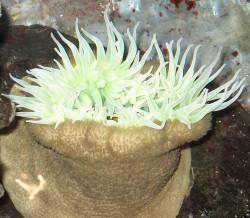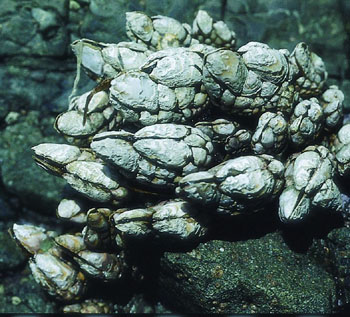Nature
Fitzgerald Marine Reserve
SCOUT OUTINGS
Aviation
Space
Automobiles
Ships & Naval
Trains
Canoeing
Kayaking
Rafting
Sailing
Windsurfing
State
National
County
Regional
Indoor
Rock
Historic
Local
Rim of the Bay
Skyline
Bay Area Ridge
Tahoe Rim
Pacific Crest
Scuba
Stand Up Paddling
Surfing
Swimming
![]() This was Troop
493 and Troop 494 past outing
This was Troop
493 and Troop 494 past outing
Fitzgerald Marine Reserve Tide Pool Outing
When: Several
What: Explore the tide pools along the San Mateo coastline. Groups of ten or larger need advanced reservations.Where: Fitzgerald Marine Reserve near Moss Beach
Website:http://www.sfgate.com/outdoors/article/Tide-pooling-Fitzgerald-Marine-Reserve-3178169.php and http://www.fitzgeraldreserve.org/ and San Mateo's Fitzgerald website
2nd Class Requirement for Animals 6.
6. Identify or show evidence of at least 10 kinds of wild animals (birds, mammals, reptiles, fish, mollusks) found in your community. |
Lots of opportunity to complete this requirement. Many species of birds, mammals and fish in and around the tidepools. Remember that Mollusks count, but not all of the tidepool creatures are mollusks. Mollusks include snails, whelks,abalone, limpets, sea hares, octopus, chitons, and mussels. Unfortunately barnacles, starfish, anenomes and crabs are common but aren't mollusks.
Summary: We went
to Fitzgerald Marine Reserve during a very low minus tide to view
various types of marine life. Some of the creatures we saw were the
California sea lion, purple shore crab, Gooseneck barnacle, purple
and red sea urchins, giant green anenome, limpets, chitons, ochre sea
star, turban snail, and saddleback sculpin. There were of course a
large number of birds including brown pelicans, California gulls,
greater yellowlegs and others. This was a day outing only and the
combination camping trip at Half Moon Bay was scheduled in December and
was canceled due to severe storms. We also came upon a group of sea
lions
basking on the sand. Above the beach, there is a large stand of Monterey
Cypress. You can stop by the ranger's station to pick up literature and
if you time it right, a tour of the area.
Directions: The reserve is located near Highway 1 in Moss Beach. The entrance to the reserve is at the west end of California Avenue off Cabrillo Highway (State Highway 1). Look for the large highway sign "California Avenue," and the smaller sign "Marine Life Refuge," just below it. There is a small parking lot and a small ranger's building. On weekends, the area is very crowded so you may want to arrive at least one or two hours before low tide.
Taking Care of Tide pools
Twice a day, retreating tides leave seashore life clinging to the rocks. Intertidal plants and animals are well adapted to this changing world of surf and sand, but have no defense against humans. Therefore, whenever you are tidepooling, please observe the following guidelines:
1. The best way to observe tidepools is to sit quietly until animals emerge from their hiding places and resume their activities. Watch out for rising tide!
2. You may touch marine life, but DO NOT pick it up or place it in a container. If you do they will die. Examine it in the place that you find it.
3. Watch your step! Walk carefully around the tidepools for your own safety and to spare the marine life underfoot.
4. Any rocks that get moved should be replaced with the seaweed side up. Life on the bottom of the rocks will die when exposed to sun and air. Please avoid moving the rocks whenever possible.
5. Shells and rocks are a natural part of the areas. Many serve as future homes for critters such as hermit crabs. PLEASE DO NOT COLLECT SHELLS, VEGETATION, ROCKS OR MARINE LIFE IN THE RESERVE.
Low Tide Zone
Sea Urchins
Purple sea urchins are common in the lowest part of the tidepool.
Nudibranchs
Nudibranchs are small, brightly colored slug-like creatures that live in the deepest parts of the tidepools.
Anemones - Cousin of the Jellyfish
Anemones, recognized by their
flower-like shape, have stinging cells on th eir tentacles. Like their
cousin the jellyfish, anemones paralyze their prey and draw them into
their mouths to be digested. Anemones are carnivores and will eat just
about any animal that comes close enough to be caught by its tentacles.
Giant green anemones eat crabs, sea stars, mussels, limpets and fish.
The smaller anemones eat small fish, shrimp and even plankton.
eir tentacles. Like their
cousin the jellyfish, anemones paralyze their prey and draw them into
their mouths to be digested. Anemones are carnivores and will eat just
about any animal that comes close enough to be caught by its tentacles.
Giant green anemones eat crabs, sea stars, mussels, limpets and fish.
The smaller anemones eat small fish, shrimp and even plankton.
Sea Stars
Sea stars are a diverse group of spiny-skinned animals, related to sea urchins (echinoderms). The most common sea star in Northern California is the ochre star, which is usually orange, black or purple with a tough exterior. Leather stars, bat stars, six-rayed stars, sunflowers star and brittle stars are also present.
Sea stars have a malleable exterior which allows them to wrap tightly around rocks' algae during tidal changes. Their internal hydraulic system allows them to cling tightly to rocks. They suck in water through their tube feet that run along their undersides, creating suction which they then attach to the rocks. This helps them stay connected during the roughest water.
Sea stars have a fascinating method of eating. They are also carnivores, but they particularly enjoy mussels. The ochre star can often be seen during low tide just below a belt of mussels. As the tide retreats, the sea stars move across the mussel bed for a meal. They attach their strong feet along each of the two shells of a mussel. They then pull the shells apart. Once the shell is opened, even a fraction of an inch, the sea star starts to eviscerate its stomach (pull it outside its body). It then pushes the stomach into the shell of the mussel. The stomach contains strong digestive juices which it secretes to make a mussel milkshake.
California Blue Mussels
Mussels, like barnacles, gather in dense clusters in the tidepools. Their blue-gray bodies contrast against the brightly colored sea stars that prey on them. Mussels are bivalves; they filter plankton from the water they suck into their bodies.
Chitons
Chitons are pre-historic-looking mollusks. Their eight-segmented flat bodies are attached to the rocks by a strong foot. There are many types of chitons in Northern California, from the large gumboot chiton to the beautiful lined chiton.
The High Tide Zone
Rock Crabs - A Tough Exterior
Rock Crabs, like all crustaceans, have
a hard protective shell. The tough ex terior
can withstand crashing waves. Their flat shape allows them to squeeze
into tight crevices, further protecting them from the waves and
predators. Crabs can survive out
of water for extended periods of time. As they wander around during low
tide, they scavenge for bits and pieces of plants and animals.
terior
can withstand crashing waves. Their flat shape allows them to squeeze
into tight crevices, further protecting them from the waves and
predators. Crabs can survive out
of water for extended periods of time. As they wander around during low
tide, they scavenge for bits and pieces of plants and animals.
Barnacles - Cousin of the Crab
Barnacles are the most common
inhabitant of the high tide zone. Although small and camouflaged, they
cover tidal rocks by the hundreds of thousands. Like crabs, barnacles
are protected by a hard shell. Unlike crabs, however, barnacles do not
move once they reach adulthood. Leaf Barnacles are the most common.
barnacles
are protected by a hard shell. Unlike crabs, however, barnacles do not
move once they reach adulthood. Leaf Barnacles are the most common.
Isopods are shrimp like creatures that are flattened dorsally or from the top (they look like sow bugs, to which they are closely related). Isopods are also common and are found throughout the Intertidal Zone.
Amphipods are shrimp like creatures that are flattened laterally or sideways (see photo below). Amphipods are commonly found throughout the Intertidal Zone. During the field trip two species will likely be encountered; the larger of the two is called a scud and the smaller ones is a sand
Snails & Limpets
 Limpets
and snails are soft-bodied animals that produce a hard, often very
decorative shell. They scrape algae from the rocks with their
sandpaper-like tongue, or radula. Limpets and snails only graze while
the tide is high. Limpets always return to the same place when the tide
retreats. Some limpets carve themselves a place in the rock which
perfectly fits their shells. This protects them from being eaten and
drying up when the tide is low.
Limpets
and snails are soft-bodied animals that produce a hard, often very
decorative shell. They scrape algae from the rocks with their
sandpaper-like tongue, or radula. Limpets and snails only graze while
the tide is high. Limpets always return to the same place when the tide
retreats. Some limpets carve themselves a place in the rock which
perfectly fits their shells. This protects them from being eaten and
drying up when the tide is low.
Rough Periwinkle: Common in the Splash Zone and beneath rocks in other parts of the shore. These little snails are quite tough, among the gastropods of the Intertidal Zone these are able to withstand the highest variation in environmental conditions (they tend to be the smallest snails). They graze on cyanobacteria and other algae.
Smooth Periwinkle: These are commonly found in the Littoral Zone and Sublittoral Zone. They also graze on cyanobacteria and other algae and tend to be larger than the rough periwinkle.
Common Periwinkle: Found in the Littoral Zone and Sublittoral Zone. They also graze on cyanobacteria and other algae; they are the largest periwinkles. The figure below compares all three periwinkles: on the far left is a rough, then next right is a smooth and two common periwinkles to the far right. *Note the size and shapes of the shells: rough is small and cone shaped; smooth is small and round; common is large with a wide cone shape.
Dog Whelk: A predator that is found in the Littoral Zone and Sublittoral Zone. They are as large as common periwinkles and eat other snails and bivalves by making holes in their shells (they then scoop out the meat using their radula).
Modified January 19, 2016